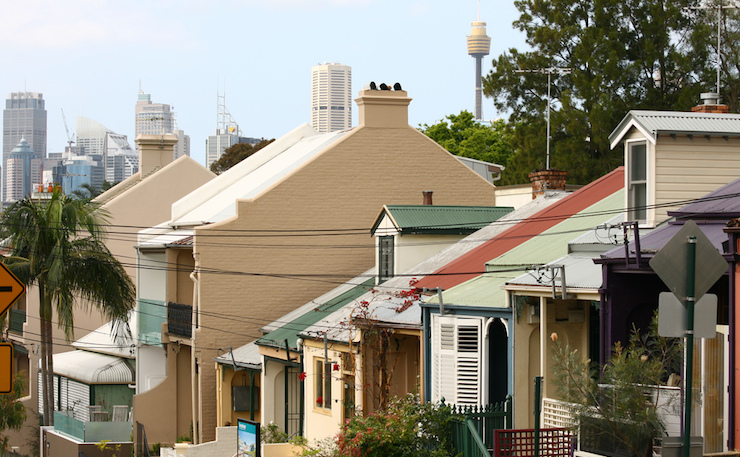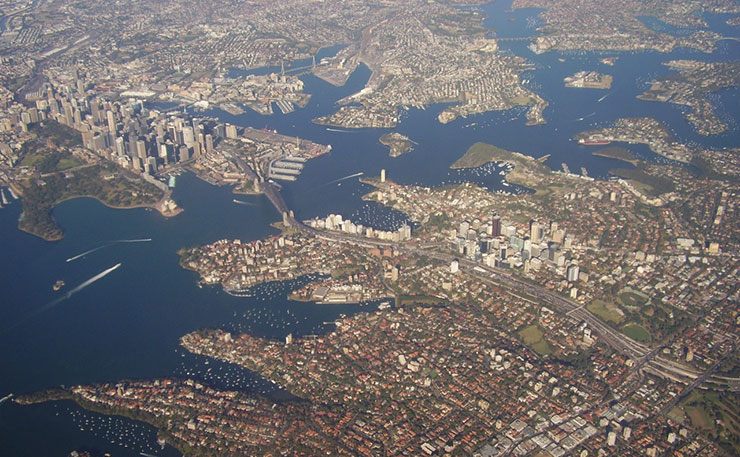The bubble is getting bigger, which means the inevitable burst will be messier. Dr Glen Anderson explains why we need to do something about housing prices sooner rather than later.
Australia’s housing affordability crisis has many dimensions. One that is routinely overlooked is its social corrosiveness. As median house prices surge ahead of wages growth, many young families who aspire to save for a mortgage deposit are remaining for years with understanding parents and in laws. This squeezes more Australians into smaller living spaces, thereby ensuring a decline in material living standards across all generations.
Indirectly, these circumstances may be contributing to Australia’s declining fertility rates. In 2012, Australian Bureau of Statistics data revealed that women on average had 1.93 children. This figure is set to fall to a worrying 1.8 in 2026, which is well below the required 2.1 children per woman necessary to sustain Australia’s population.
Compounding these changes, mothers and fathers are becoming older.
This increases the risks of medical complications to mother and child, makes conditions such as autism more likely, and means grandchildren are now less likely to know their grandparents. Cost of living pressures – which primarily revolve around the cost of housing – are contributing to these changes.
Those young Australians who rent are forced into housing which is more precarious than home ownership. As rents increase to cover investor-landlord borrowings, young families are often required to take on casual weekend work, or relocate to alternative postcodes and dislocate children from schools and their emerging social networks.
Australia’s housing affordability crisis is also distorting all aspects of the Australian economy.
At its most basic level, the growing gap between median wages and house prices is ensuring that an ever-greater quantum of income is devoted to mortgage repayments. Household debt as a percentage of household disposable income is now at record highs.

This makes the average Australian family more financially vulnerable to the impact of future interest rate hikes than any other time in history.
The immediate effect of record debt levels is less income available for discretionary spending. This reduces aggregate demand for goods and services supplied by small and medium businesses, which in turn leads to stagnating wages, underemployment, casualisation and anaemic investment.
If these are not good enough reasons to act now on housing affordability, then here is the bad news: failure to act will only make the problem much worse, and result in an even larger housing bubble, that will make an even bigger economic mess when it inevitably bursts. Although interest rates are currently at record lows, they will rise.
When this occurs, disposable income and discretionary spending will further contract. The wheels of the economy will grind to a halt. Homes will saturate the market, not out of choice, but economic necessity, setting off a downward economic spiral. Longer-term economic changes such as accelerated roboticization will only compound these difficulties.
What then can Australia do? As everyone is becoming aware, there are a number of simple solutions.
First, negative gearing has to be reformed. It is a tax concession which makes it easier for wealthy investors to buy their eleventh house, than for a young Australian family to buy their first. It pits seasoned investors against first home buyers, unnecessarily driving up the cost of housing. Make no mistake, negative gearing is a tax loophole for the rich and comes at the expense of the social and economic whole.
Tax concessions for capital gains also require reform. Prime Minister John Howard – apparently acting on the advice of businessman John Ralph – cut capital gains tax by 50 percent in 1999.
Although the cut was designed to promote investment and lead to more innovative and competitive companies, in large part, it ensured the hideous inflation of Australia’s housing market.

A property transfer tax on foreign buyers is another reform option. This would ensure that non-Australian citizens desirous of parking money off shore for safe keeping and speculative returns would vacate, thereby taking further steam out of the housing market. This was recently implemented in Vancouver to combat that city’s notorious housing crisis and has already effected significant median price reductions.
Land supply also requires consideration. It is a remarkable feat that in a country with vast land reserves and a small population that housing is among the most unaffordable anywhere in the world. Put simply, there has been a failure to release land in line with population growth, which has contributed to unsustainable land values.
The solutions are basic and obvious. Already Opposition Leader Bill Shorten has committed to alterations to negative gearing and capital gains tax. Even Prime Minister Malcolm Turnbull and Treasurer Scott Morrison have previously questioned the scope of current negative gearing concessions.
Cracking down on negative gearing and capital gains tax concessions will also generate more government revenue, thereby preventing the need for draconian budgetary measures such as welfare cuts and $100,000 university degrees. Indeed, recent estimates suggest that capital gains tax concessions give away approximately $6 billion per year.
This alone would go a long way to improving Australia’s budgetary bottom-line.
Inflationary house prices are impacting upon all generations socially and economically. It’s in everyone’s interest to tackle Australia’s housing affordability crisis.
Donate To New Matilda
New Matilda is a small, independent media outlet. We survive through reader contributions, and never losing a lawsuit. If you got something from this article, giving something back helps us to continue speaking truth to power. Every little bit counts.






